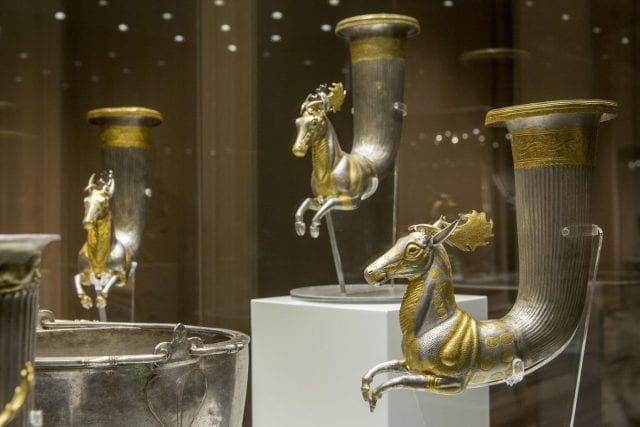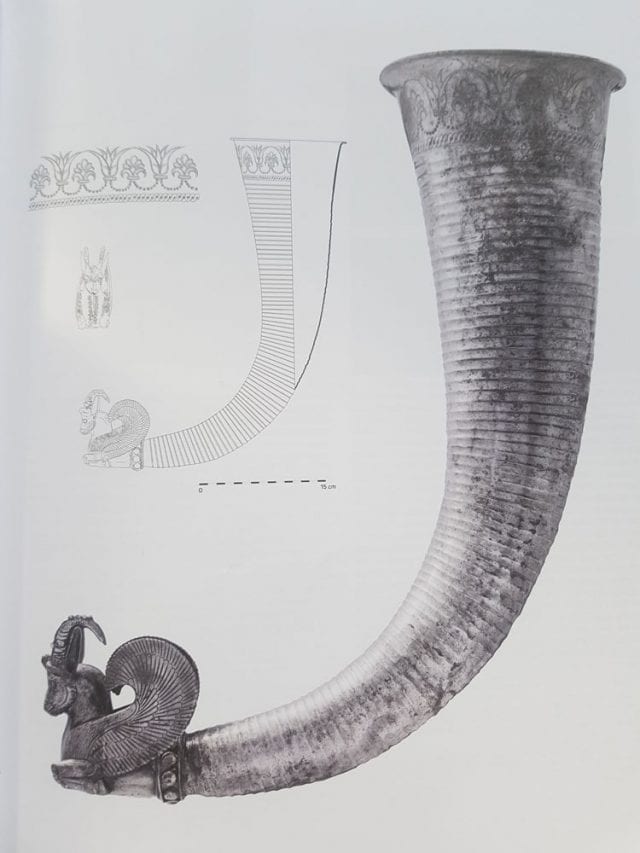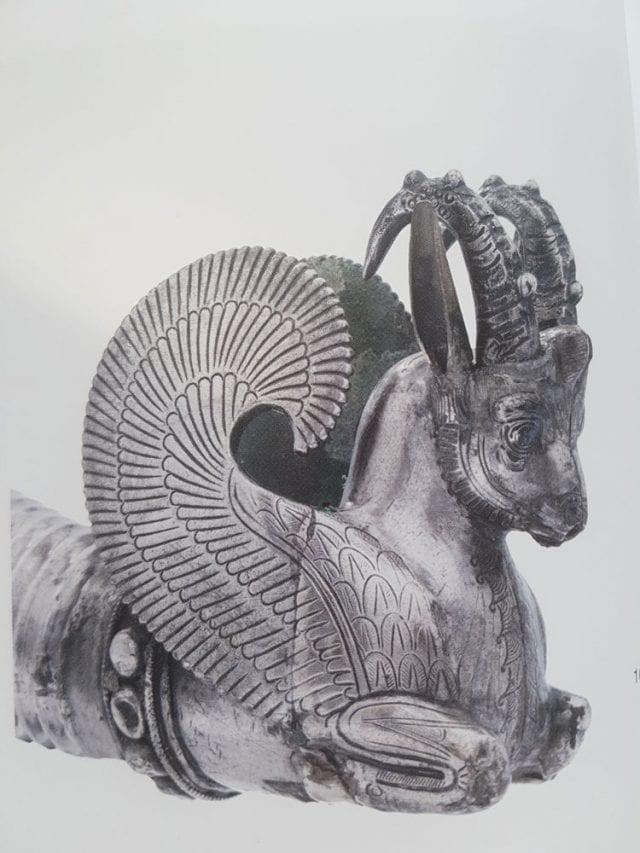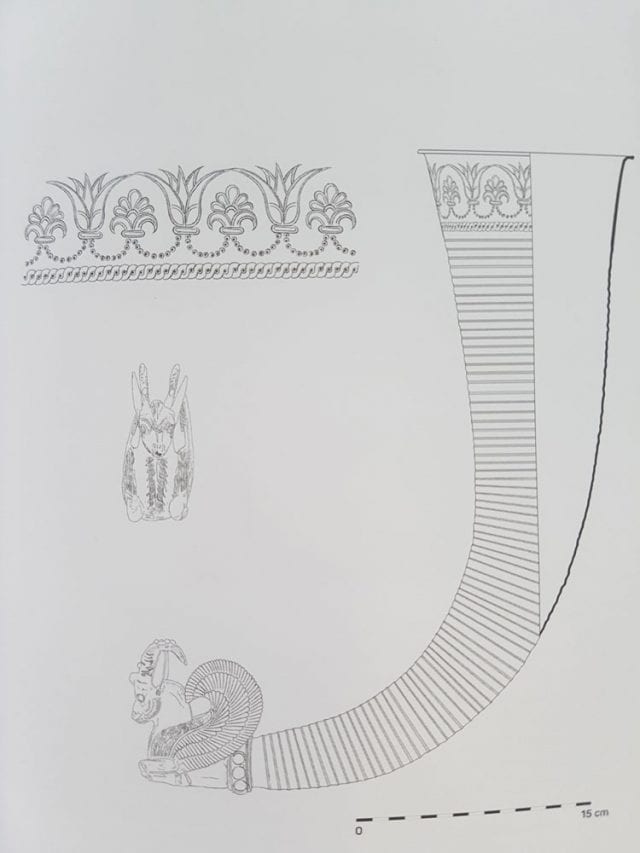
Vasil Bojkov collection of ancient artefacts is known for some of its extremely rare pieces, never-seen-before examples of great masterfulness, objects that reveal stories, tell legends, and depict a whole world of crafts, politics, culture, and traditions. There are over 3000 artefacts that build up his unique collection and every single one of them contains a piece of history which allows for studies of pottery designs, politics, as well as old-time cultural ideas and representations. They arrive from different centuries and places. We can see a variety of metal vases and utensils that define different periods such as the Achaemenid, the Greek, the Etruscan, the Thracian period, and others.

Silver rhyton with winged Ibex
The piece we are looking at in this article is a silver ibex rhyton that is said to date back to the first quarter of the 5th century BC. Unfortunately, its exact provenance is unknown. The shape of this particular rhyton, however, is something quite common for many earlier creations from the Achaemenid period. The horn is about six times larger than the protome, which is an interesting detail. What is truly impressive about this ancient artefact is the apparent craftsmanship effort put in it. From top to bottom, the silver rhyton is a piece that catches our attention. There are carefully mastered ornaments in the shape of chiseled double contour palmettes and lotus flowers right under the flaring rim. A curving chain of punched circles can also be seen to somewhat complete the top part of the horn. It is as if the creator wanted to cover every single bit of the rhyton with ornaments and details in such a manner that will exceed the expectations and understandings of the generations to come. The craftsmanship is of superior quality and it continues throughout the whole piece.

Silver rhyton with winged Ibex protome details
Perhaps, the most impressive part is the winged ibex forepart protome. This animal imagery is not accidental as there is a much more symbolical meaning deeply rooted in it. Antecedents of the silver ibex protome rhyton are found in bronze and clay with most of the pieces deriving from Iran and the nearby regions. It comes as no surprise then that the treatment that this animal received on pottery from different areas and sites, over a span of a thousand years, clearly hints at its honorable status and provides us with possible clues toward a cosmology for the people of those ancient times and places.

Silver rhyton with winged Ibex graphic
Back to the Vassil Bojkov Collection exemplar, the silver ibex rhyton definitely speaks of skills and artistry. We see the protome in the shape of a kneeling ibex with its front legs bent back. The eyes of the animal are wide open and are further underlined by massive eyebrows. The masterfully crafted horns have three knobs on the external side and bear a few perpendicular grooves as well. The ears are long and pointed, while the beard is stylized in a way that highlights the very contours of the cheeks. There are, of course, other details which underline the face but the wings of the ibex are even more impressive as they are richly decorated with feather-like details.
This piece was on display in the exhibit “The Golden Fleece. The quest of the Argonauts” at the National Gallery – The Palace in Sofia, Bulgaria. The event was part of the European Year of Cultural Heritage 2018 initiative and attracted visitors from all over the world, this bringing together different cultures and histories. The exhibition was open to the public until the 10th of June, 2018.





